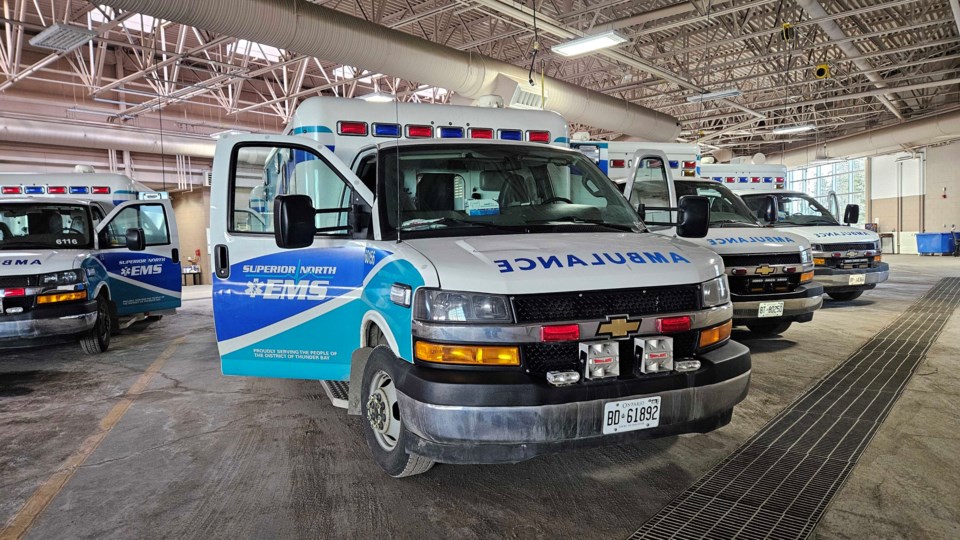THUNDER BAY — There's more shifts and more rotations but no paramedics have been recruited to fill the vacancies in the district, according to the chief of Superior North EMS.
Shane Muir said five openings have yet to be filled, and he spoke of the challenges in filling those positions.
"It's an ongoing challenge and we're doing everything we can, but there's only so many paramedics in the pool to pull from," Muir said.
"We're working with Confederation College to try and kind of boost the industry with the number of people coming out. We're also offering a lot of incentives to fill those shifts."
Muir is referencing the Education Cost Recovery Program, which allows paramedics from the 2023 and 2024 graduating years to recover up to $8,000 when working for SNEMS in the district for two years.
The province is also offering a learn-and-stay grant for eligible nursing students, paramedics and medical lab technologists who will be required to work in the region where they've studied.
Recent social media posts by the local paramedics union, Unifor Local 229, suggest a lack of staffing for certain ambulance bases in the district.
Muir said staffing in the district has been an ongoing problem for as long as he can remember.
"It's a very vast area where we have a large number of stations — we're talking 13 stations to cover. So it takes a lot of paramedics and a lot of people . . . it's a bit of a challenge to make sure that they're all filled.
"We have a problem with staff leaving with absenteeism. It does compound some issues because we do have to provide that vacation time. Otherwise, our paramedics get burnt out, and we wind up in a very long-term, dire situation."
The chief said he'd been in talks with Confederation College about running a double course to attract more grads, but that wasn't a possibility.
"We were able to collaborate with them and expand the seats up another 10 positions. We're hoping to see another 10 graduates out of the college program, which will definitely help staff our ranks."
He did say around 15 people could be hired for part-time positions in either floating or specific roles.
However, the college is in talks with the province to expand its paramedic program to three years, up from two. In doing this, there could be a gap year in which there could be no paramedic graduates to enter the workforce.
"That's something that we're trying to plan for. We're really trying to staff our ranks in the next few years to ensure that we have used those additional staff so we have good coverage going forward into the future, knowing that that gap year is coming."
Kari Jefford is the president of Unifor Local 229, which represents paramedics in the district.
She noted that recruitment and retention have been an ongoing challenge, but this year it seems critical compared to others.
"We're hearing through some labour management meetings over the last couple of months that there will be bases that won't be able to be staffed, just based on the sheer numbers of shortages," Jefford said.
"So they're concentrating on staffing bases that are closest to hospitals, where you have some bases that are sister bases. Some of those bases will not be staffed. Nakina is one that's not staffed regularly or the Upsala base is another one that it's not being staffed regularly."
Jefford noted that many paramedics in the region are considered part-time but are working full-time hours.
"We have many part-time paramedics who are working in temp full-time positions and they're not entitled to or they don't get a chance to take a paid vacation," she said.
"Your full-timers do get some paid vacation. When you're recruiting to a service where you're at least 22 positions short, you're looking at having to move to the district and no guarantee that you're going to be working in the community that you're taking a job in."
Katie Nicholls is a Local Journalism Initiative Reporter with Newswatch
